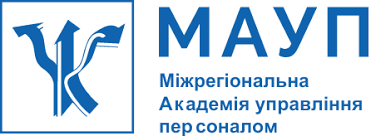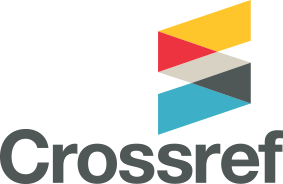THE EFFECT OF PELOID THERAPY ON THE DYNAMICS OF BIOCHEMICAL BLOOD PARAMETERS WITH EXPERIMENTAL OSTEOARTHRITIS
DOI:
https://doi.org/10.32689/2663-0672-2022-2-3Keywords:
osteoarthritis, rats, peloid therapy, glycoproteins, chondroitinsulfatesAbstract
Formulation of the problem. It is known that until recently, complex conservative therapy remained the leading method in the treatment and medical rehabilitation of patients with osteoarthritis. Physical factors, both preformed and natural, occupy an important place in the therapy of patients with osteoarthritis. Analysis of recent research and publications. The most popular among the means used in the treatment of patients with osteoarthritis of the knee joints are therapeutic muds. According to modern ideas, their therapeutic action is based on a combination of mechanical, thermal, chemical, biological and other components of the peloid. Formulation of the purpose of the article. To study the effect of peloid therapy on biochemical blood parameters of white rats with experimental osteoarthritis. Presenting main material. The content of glycoproteins in the blood of rats was probably increased on the 7th day in animals with osteoarthritis compared to the values in intact ones. A slight increase in the level of glycoproteins was maintained throughout the experiment until the 30th day. During the treatment with sulphide-mud mud, on the 7th day, an increase in the content of glycoproteins was noted to the level of the indicators of the control group. By the 15th day, the concentration of glycoproteins probably decreased compared to its value in the control group, however, by the end of the observations, the amount of glycoproteins in the blood serum of the experimental animals exceeded this indicator than in the rats of the control group. These data indicate that the use of sulphide mud reduces the activity of the inflammatory process, but not sufficiently. The concentration of chondroitin sulfates in the blood serum of experimental animals on the 7th and 15th day of osteoarthritis was increased in comparison with the results obtained in intact animals. However, by the 30th day, there was a decrease in the indicated indicator compared to the one that occurred earlier. Conclusions and prospects for further research. Thus, it was established that the use of peloidotherapy led to a decrease in the content of chondroitin sulfates in the blood serum of experimental animals in comparison with the corresponding term of the control group, which indicates the beneficial effect of peloidotherapy on the exchange of glycosaminoglycans. In the conditions of peloid therapy, the dynamics of biochemical indicators of the state of connective tissue were revealed, which indicated the beneficial effect of peloid applications on the knee joints of experimental rats, which was manifested in the reduction of the inflammatory and destructive process in the cartilage tissue of the affected joints. The prospect of further research is the application of this technique of pyeloid therapy in clinical orthopedic practice.
References
Evaluation of the therapeutic and the chemical effects of balneological treatment on clinical and laboratory parameters in knee osteoarthritis: a randomized, controlled, single-blinded trial. Adıgüzel T, Arslan B, Gürdal H, Karagülle MZ.Int J Biometeorol. 2022 Jun;66(6):1257–1265.
Balneological outpatient treatment for patients with knee osteoarthritis; an effective non-drug therapy option in daily routine? Özkuk K, Gürdal H, Karagülle M, Barut Y, Eröksüz R, Karagülle MZ.Int J Biometeorol. 2017 Apr;61(4):719–728.
Peloids as Thermotherapeutic Agents. Maraver F, Armijo F, Fernandez-Toran MA, Armijo O, Ejeda JM, Vazquez I, Corvillo I, Torres-Piles S.Int J Environ Res Public Health. 2021 Feb 18;18(4):1965.
Дослідження фізико-хімічного складу ропи озера Соляне (Херсонська область, Олешківський район) та ефективності її впливу на перебіг дексаметазонового артрозу у щурів. Б. А. Насібуллін, С. Г. Гуща, Т. В. Польщакова. Медична реабілітація, курортологія, фізіотерапія. 2019. № 2. 27–31.
Клінічна ревматологія: сучасні діагностичні та лікувальнопрофілактичні алгоритми / Іщейкін К. Є., Потяженко М. М., Настрога Т. В., Величко Є. О. : навчально-методичний посібник для лікарів-інтернів, клінічних ординаторів, слухачів-курсантів системи післядипломної освіти, а також лікарів-терапевтів, ревматологів та сімейних лікарів. Полтава, 2015. 243 с.
Формування системи медичної реабілітації хворих та осіб з інвалідністю : монографія / В. І. Шевчук, Н. М. Беляєва, О. Б. Яворовенко. Вінниця : ФОП Рогальська І. О., 2019. 205 с.
Anti-inflammatory effect as a mechanism of effectiveness underlying the clinical benefits of pelotherapy in osteoarthritis patients: regulation of the altered inflammatory and stress feedback response. Ortega E, Gálvez I, Hinchado MD, Guerrero J, Martín-Cordero L, Torres-Piles S.Int J Biometeorol. 2017 Oct;61(10):1777–1785.
Dynamics of tumour necrosis factor-alpha and clinical signs of osteoarthrosis during the treatment with alflutop in combination with peloid applications under conditions of health resort. Maganev VA, Davletshin RA, Davletshina GK, Iapparov GS.Vopr Kurortol Fizioter Lech Fiz Kult. 2011 Mar-Apr;(2):18–20.
Фізіотерапія : підручник для студентів вищих медичних навчальних закладів/ В. Д. Сиволап, В. Х. Каленський ; ЗДМУ. З. : ЗДМУ, 2014. 196 с.
Regenerative Therapy for Osteoarthritis: A Perspective. Gun-Il Im, Tae-Kyung Kim. Int J Stem Cells. 2020; 13(2): 177–181.
Current status of regenerative medicine in osteoarthritis. Gun-Il Im. Bone Joint Res. 2021 Feb; 10(2): 134–136.
A comprehensive analysis to understand the mechanism of action of balneotherapy: why, how, and where they can be used? Evidence from in vitro studies performed on human and animal samples. Sara Cheleschi, Ines Gallo, Sara Tenti International Journal of Biometeorology. Volume 64. 2020. 1247–1261.
Early ultrastructural changes of articular cartilage and synovial membrane in experimental vitamin A – induced osteoarthritis. Lapadula G., Nico B., Cantatore F.P., La Canna R., Roncali l., Pipitone V. J. Rheumatol. 1995. Vol. 22. № 10. P. 1913–1921.
Методи дослідження маркерів метаболізму сполучної тканини у сучасній клінічній та експериментальній медицині / Д. В. Морозенко, Ф. С. Леонтьєва. Молодий вчений. 2016. № 2(29). 168–172.










